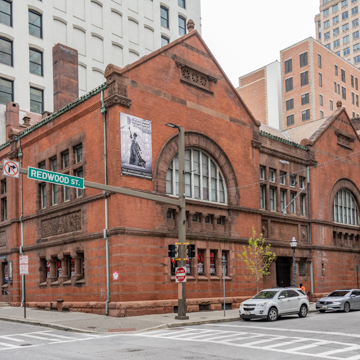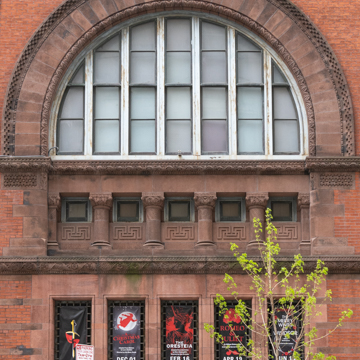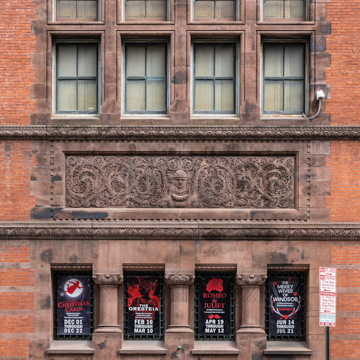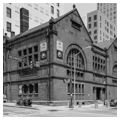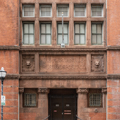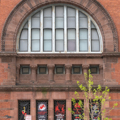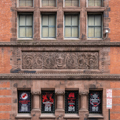This building was a milestone in the work of Wyatt and Sperry, and the design of which Wyatt is said to have been most proud. It exhibits such hallmark features of Richardsonian Romanesque as massive masonry walls, punctuated by oversized round-arched and flat-banded windows, and lights divided by colonnettes. Likewise, terra-cotta is used to form quoins, lintels, and relief panels cast in intricate foliated patterns and those symbolic of its commercial function, such as the head of Mercury, the god of commerce. Local manufacturers provided much of the building material including bricks and terra-cotta from Russell Burns and Company, structural iron and heating apparatus by Hayward, Bartlett and Company, and ironwork by G. Krug and Son.
The Mercantile Trust Company is also significant to the commercial history of Baltimore and post-Civil War era financial practice as one of the first to offer “department store” banking, allowing customers to borrow and save from a single institution. Its substantial Romanesque design was used to convey a sense of impenetrability, and it was in fact one of the few buildings to withstand the 1904 Baltimore fire. It was rehabilitated by Helm Foundation in 2012, operating as the Chesapeake Shakespeare Company theater.
References
Andrews, Ronald L. “Mercantile Trust and Deposit Company,” Baltimore City, Maryland. National Register of Historic Places Nomination Form, 1983. National Park Service, U.S. Department of the Interior, Washington, D.C.
Hunter, William J. “Mercantile Trust & Deposit Company,” Addendum to: HABS No. MD-191. Historic American Buildings Survey, National Park Service, 1960.
Ossman, Laurie. “Mercantile Trust & Deposit Company,” Addendum to: HABS No. MD-191. Historic American Buildings Survey, National Park Service, 2001.









